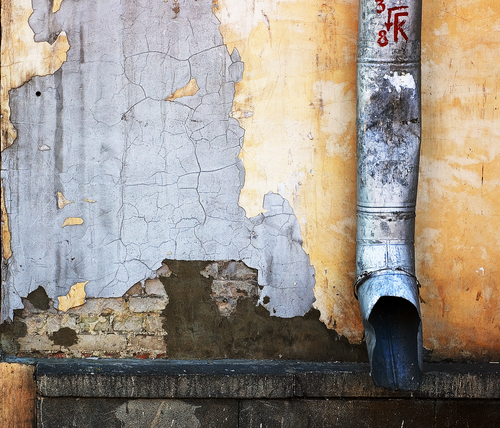Warning Signs of Foundation Repair
Cracks
Cracked or crumbling foundation is a straight-forward sign that you need a foundation repair. Aftermath Repair can help come and assess the damage and come up with a plan to help fix your foundation.Floors and Walls
Sloping, sagging or buckling of foundation floors or walls that can be felt or seen from the interior are signs that you need a foundation repair.Water
Standing water around the structure from poor drainage could be a sign that you need to contact Aftermath Repair in Houston, Texas.Mildew
If you start seeing mildew, moss and mold on the exterior of your home and foundation there might be a need for a foundation repair. Contact Aftermath Repair in Houston, Texas to learn about our foundation repair services.Doors and Windows
Improperly fitting doors and windows may not seem like a big deal, but it might be a sign that your foundation is damaged and is in need of repair.Trees
If you have large trees around your foundation it can become very dangerous. As the roots grow, they will start breaking up the foundation and you will need foundation repair.We Know Texas Foundation Issues
 As a local foundation repair company operating in Houston and surrounding areas, there’s no one better suited to diagnosing and fixing foundation issues in Texas. We know firsthand how the Texas climate affects foundations, what the common issues are, and how best to fix each type of damage.
As a local foundation repair company operating in Houston and surrounding areas, there’s no one better suited to diagnosing and fixing foundation issues in Texas. We know firsthand how the Texas climate affects foundations, what the common issues are, and how best to fix each type of damage.
Common Texas Foundation Issues
From poor drainage and plumbing leaks to expansive clay and tree roots, many issues contribute to foundation damage. We have the tools and equipment necessary to correct the resulting issues in an effective and efficient manner. The first step is an inspection to see what the root cause is and to determine the next course of action: mainly polyurethane foundation repair or pier foundation repair.We Know Soil
Texas is a big state, with varied topography, surface geology, climates and geography – all of which feature their own unique soil types. In turn, those types will impact your home’s foundation in a variety of different ways. And because of this complex soil composition, you need the expertise of a qualified foundation repair company that understands common issues of Texas foundations and can recommend the best solution for any given soil type. There are many things that can impact the stability of your foundation, from shoddy initial workmanship to low-quality materials. But the main one is the soil softness. In a nutshell, if soil is softer underneath one foundation footing, that portion of the house will likely settle deeper and faster than other areas will, resulting in a cracked or sinking foundation. Foundation repair in Texas is never a one-and-done solution. Depending on where you live, the soil may be different, thus will affect your foundation differently. Our experts know every soil type in this state and can employ the corresponding solutions. For example, in Dallas County, there is a variety of expansive clay soils, which can shrink, swell, and move water in a way that will compromise your foundation. But in Harris County, you have soils that range from pure sand to clay-rich soils that can encounter a problem when exposed to high amounts of water.We Know the Warning Signs
Our team also has extensive knowledge of the warning signs of foundation failure. Cracks, sagging floors and walls, standing water, mildew, improperly fitting doors and windows, and large nearby trees can all compromise the stability of your foundation. As you can see, it takes an experienced eye to know these differences. Come to the experts who know common Texas foundation issues backwards and forwards: Aftermath Structural Repair. Feel free to contact us now at 281-231-8904.


Causes
- Poor Drainage
- Seasonal Changes
- Sanitary Plumbing Leaks
- Expansive Clay
- Trees & Tree Roots
Polyurethane Foundation Repair
Polyurethane is best utilized to lift and stabilize the interior slab-on-grade as opposed to the exterior grade beam. The interior slab is typically 4-6″ thick, requiring a wider area of support to generate the lift needed.
Pressed pier can only provide a small foot print under structural beams, often times neglecting lift and support to the slab spanning between the structural beams. The polyurethane foundation repair process begins with drilling a 5/8″ hole through the foundation for access.
The high density polyurethane material will enter the ground with low pressure in a liquid state. The two-part polymer will mix together, expand, and fill any air voids that currently exist under the foundation.
Once the soil compresses to the point of refusal, the foundation will then begin to lift from the expansion of the high density polyurethane. The foundation will be lifted utilizing a controlled injection method that will be monitored by a Zip-Level, allowing our technicians to know when the correct amount of lift is achieved within 1/10 of an inch. Most polyurethane foundation repairs take one day to complete the scope of work.
Foundation Repair – Piers
The weight load of a house is designed to rest primarily on the exterior grade beam, around the perimeter of the foundation. Weight loads spanning across the house also have grade beams supporting interior load bearing walls. If the settlement of the house is found to be in the area of these load bearing exterior and interior grade beams, then traditional pressed piers are most likely the correct solution. With the resistance of the structures weight, pressed piers are designed to reach depths where little soil movement can be found.
The pier installation process begins by digging a shallow excavation at each pier location to access the grade beam. Piers are typically spaced every 8′ in residential applications and every 6′ in multiple story or commercial applications. 6″ solid concrete cylinders will then be pressed to depth until a point of refusal is reached. In south Texas, depths of 15′-20′ are typically reached.
At this point the structure will then begin to lift to the desired elevation. Each pier location will then be covered up, compacted, and placed back to its original condition. In locations with concrete prohibiting access, such as porches or driveways, break-outs will need to be cut away so that the exterior grade beam can be accessed. Aftermath Structural Repair will then pour the break-out concrete back to its original elevation once the work is complete.
Typical residential pier work can be completed in 2-5 days
